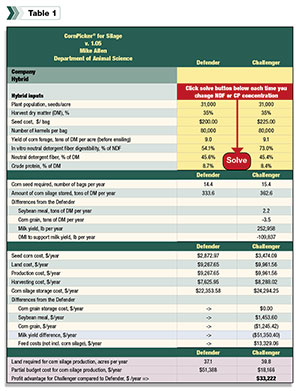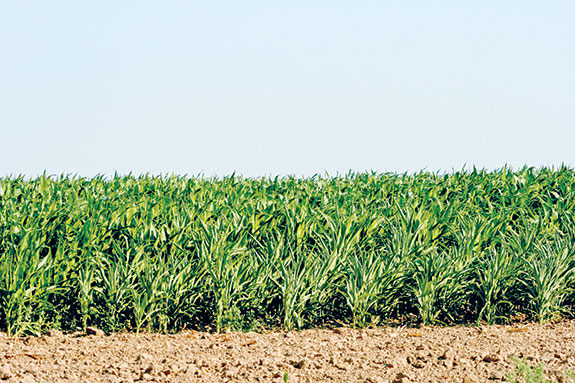It used to be so easy. We didn’t decide whether fields would be harvested for corn grain or silage until the end of the season. Usually the worst-looking corn was taken for silage. In the past, there was very little data on corn silage quality or performance, and hybrids were chosen based on grain yield. Until recently, we ignored the nutrient qualities of our corn silage hybrids.
Fortunately, times have changed. We now know that hybrids vary widely in neutral detergent fiber digestibility (NDFD), crude protein levels and starch.
Selecting a hybrid for silage may now be more complicated, but more information helps us make much better decisions. And making better hybrid decisions is the first step toward producing high-quality corn silage.The volatility in the dairy market makes it critical to choose hybrids that will help maximize profitability for your farm. Variation in dry matter yield and quality of silage hybrids can affect farm profits by thousands of dollars each year.
Carefully calculating a partial budget can help clarify these choices. That’s where CornPicker can help.
Helping you choose a silage hybrid

CornPicker for silage is an Excel spreadsheet developed by Dr. Mike Allen at Michigan State University .
It calculates a partial budget demonstrating the financial effect of corn silage hybrid selection by comparing analyzed characteristics of one hybrid with another.
Click here or on the image at right to view it at full size in a new window.
A side-by-side comparison shows how costs and returns change when two hybrids are selected.
The program can be downloaded free of charge on the Michigan Dairy Review website .
As you know, the costs of farm inputs change dramatically over time and can affect the profitability of one hybrid over another.
CornPicker allows you to take all of those factors into consideration with calculations for:
• Farm inputs
• Herd inputs
• Hybrid-specific inputs
The farm-specific costs are directly related to planting, growing, harvesting and storing corn silage.
They can include seed, land rent, fertilizer, herbicide, fuel, labor, insurance and interest, as well as machinery, storage structure costs and depreciation, plus costs for filling, packing and covering the silo. Shrink is included as well as current prices of corn grain, soybean meal and milk.
CornPicker allows you to enter different groups of cows into the calculations for corn silage consumption. Diet information such as forage NDF concentration from corn silage, diet costs and milk yield response per unit of in-vitro NDFD are included.
NDFD is a critical factor because research has shown that increasing NDFD of corn silage improves fat-corrected milk yield as well as dry matter intake. Each percentage point of digestibility results in 0.55 pounds of milk, according to research published in the Journal of Dairy Science.
Hybrid-specific inputs include planting population, harvest dry matter percentage, seed cost, yield per acre, in-vitro NDFD and concentrations of NDF and crude protein.
NDF concentration of forage is limiting to dry matter intake; therefore, it is considered when calculating how much corn silage can be fed. If one hybrid has higher crude protein, the software automatically accounts for less soybean meal to be fed.
Obtain hybrid information for CornPicker using data for hybrids grown in multiple locations across different environments. That makes the calculations more accurate than numbers from one farm or one location – or information from only one year.
Seed companies and universities often will have yield and quality parameters from many locations to accurately compare products.
Getting results when it matters most
Once you enter all of the necessary data into CornPicker, the program calculates a partial budget for growing and feeding each of the two hybrids you are comparing.
All of the details are listed for corn silage production, including the projected amounts of corn silage stored and milk production per year.
Land required is listed in acres per year, and finally the estimated profit advantage for growing one hybrid as compared with another is listed on the bottom line of spreadsheet.
With all of the decisions that you need to make every day to be profitable in today’s economy, CornPicker takes the guesswork out of silage hybrid selection.
By taking into account all of the pertinent information surrounding growing corn silage and feeding cows, CornPicker helps you make more informed hybrid decisions. And since the calculations are based on your own current data, CornPicker is a timely tool to choose the most profitable hybrids for your farm each year. PD
Emery is a dairy veterinarian and practiced in Wisconsin for 11 years. Since 2006, she has been employed by Dow AgroSciences providing technical nutritional support for the silage business in Wisconsin and Iowa.
Kathleen Emery
Dairy Nutritionist
Mycogen Seeds







